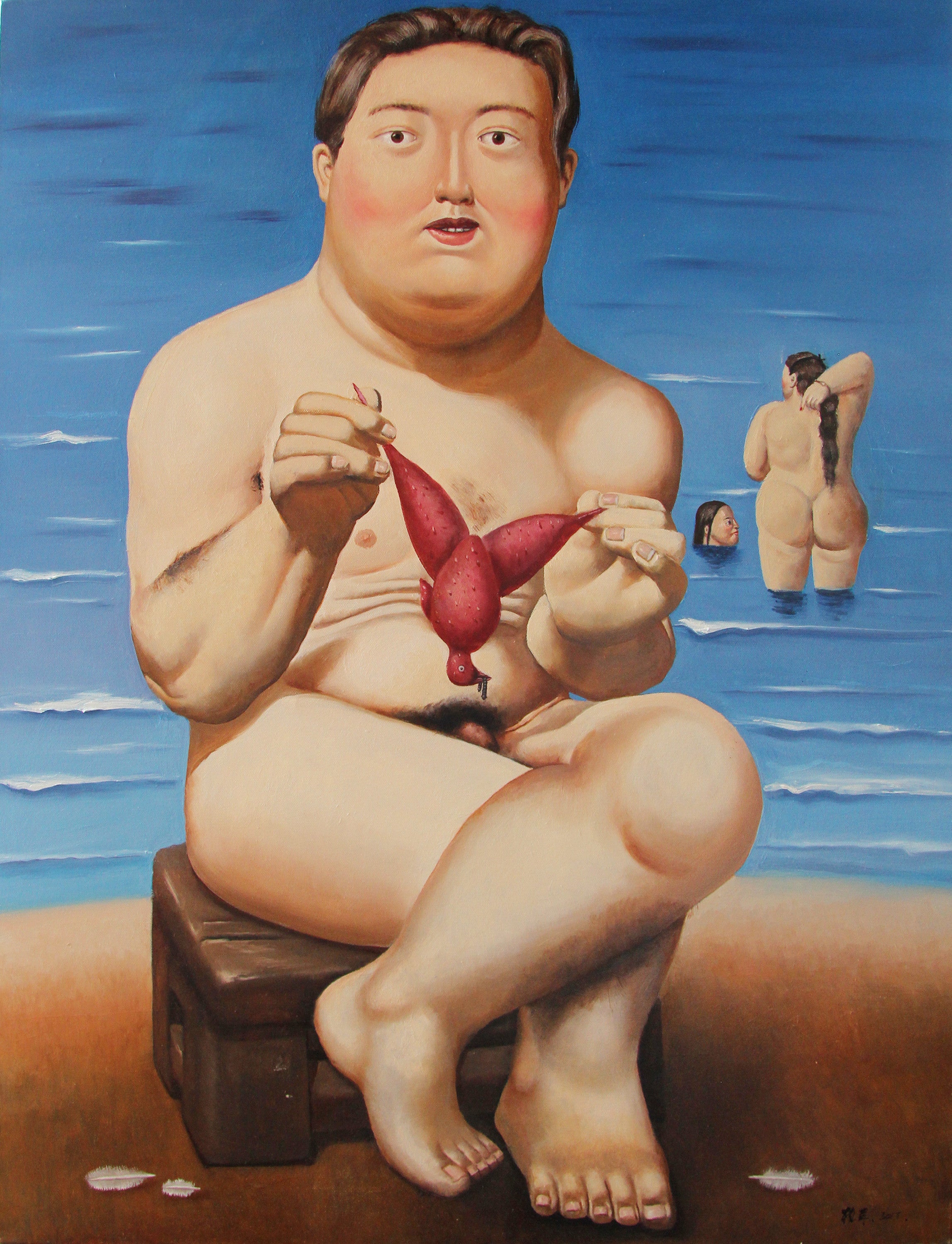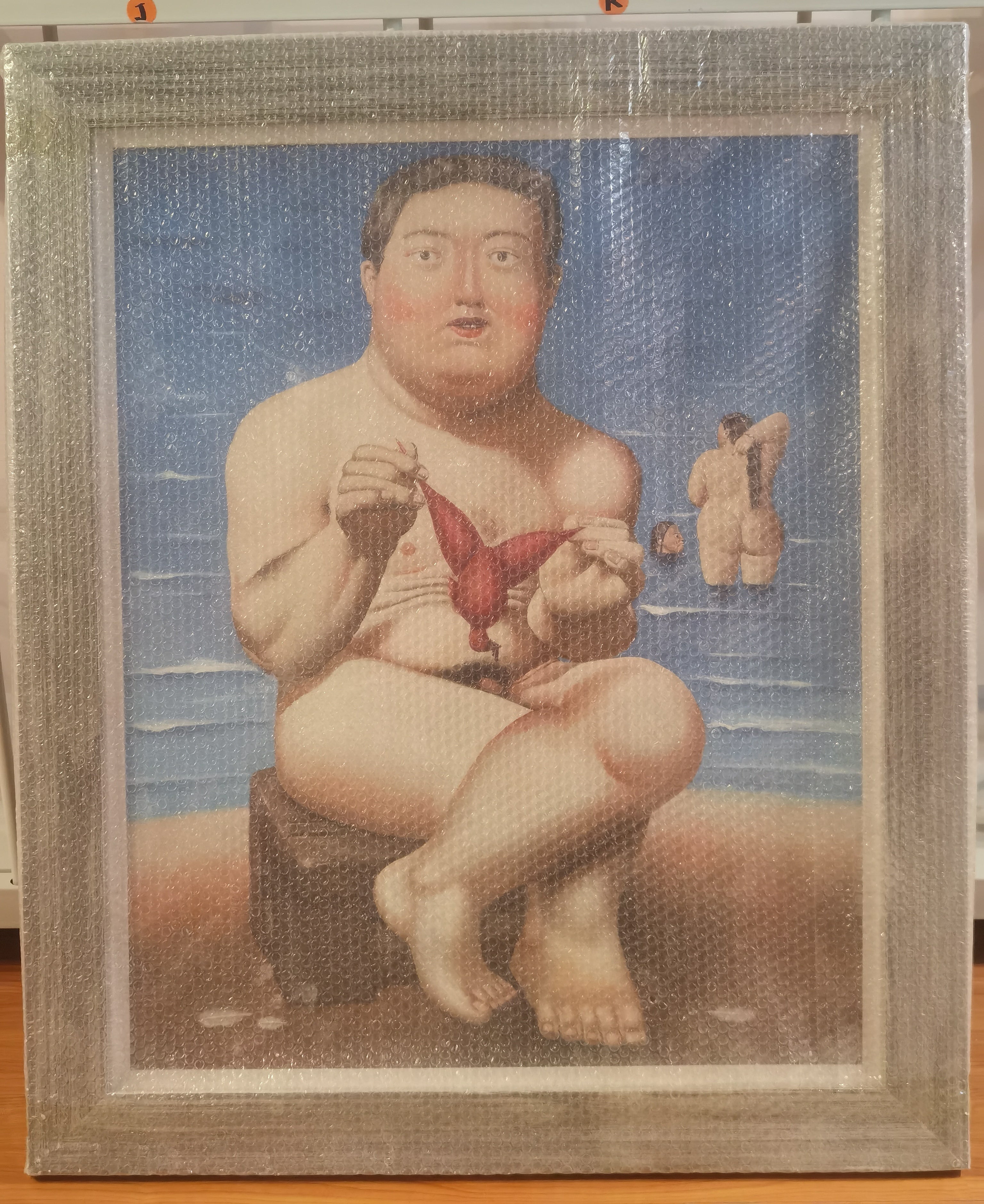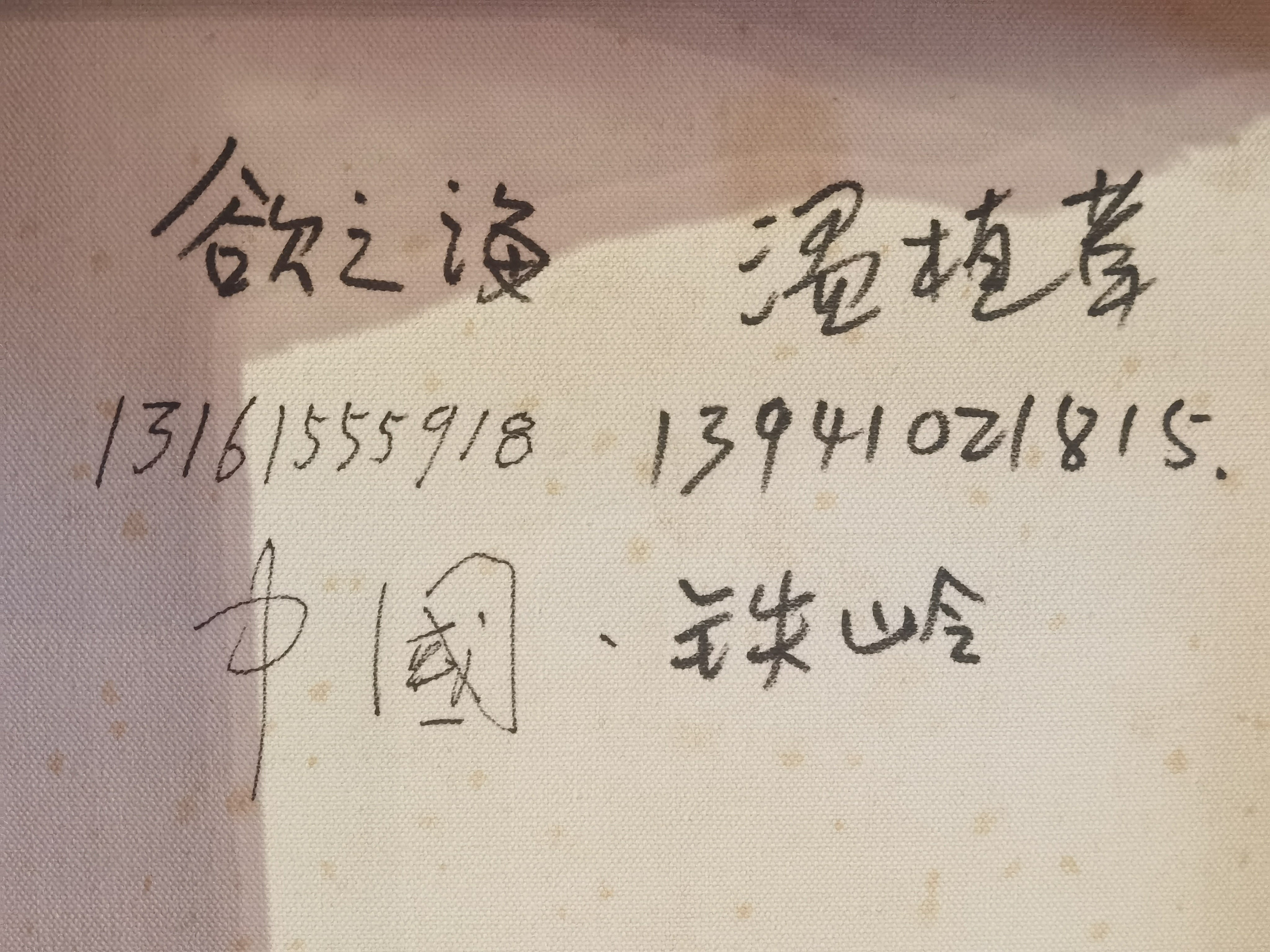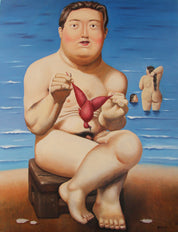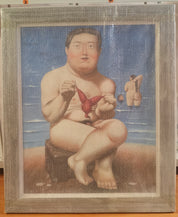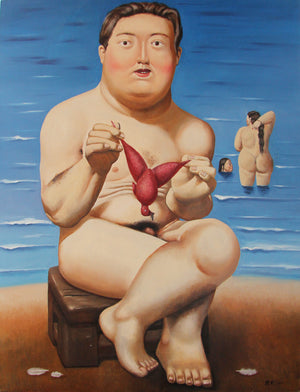Sea of Desire
Wen Zhirong
Artwork Details
Artwork Description
Title: Sea of Desire
Artist: Wen Zhirong
Date: n.d.
Medium: Oil on canvas
Dimensions: 39.4 x 31.5 in (100 x 80 cm)
Artwork Identification
Sea of Desire by Wen Zhirong presents a nude, corpulent figure seated at the edge of the sea, clutching a pair of red yams arranged suggestively. The composition extends into the background, where another nude figure—presumably female—is seen wading into the water, while a third figure’s disembodied head floats nearby, holding a mirror. These elements combine to create a surreal tableau of sensuality and absurdity.
Artistic Style and Influences
The work belongs to a genre of figurative painting marked by exaggeration, irony, and subtle grotesquerie. Wen Zhirong employs a visual language reminiscent of Fernando Botero’s volumetric figures, but with more surrealistic undertones. The exaggerated physicality, humor, and symbolic content align it with contemporary Chinese satirical realism—an approach often used to critique societal norms and repressed desires.
Historical Context
Emerging from a broader movement in Chinese contemporary art that explores body image, sexuality, and psychological states, Sea of Desire critiques the constructed nature of physical beauty and personal longing. It reflects the post-1980s artistic turn in China, where once-taboo themes became tools of self-expression and societal commentary in the wake of liberalization and globalization.
Provenance
Provenance documentation can be provided upon contact.
Condition and Conservation
The artwork is in very good condition. The surface shows no visible damage or signs of wear, and the paint layers remain vibrant and intact. The canvas is well-stretched and stable, suitable for immediate display or archival framing.
Artistic Significance
Wen Zhirong’s Sea of Desire is a provocative meditation on human appetite, both literal and metaphorical. Through visual wit and anatomical distortion, the painting prompts viewers to confront themes of sensual indulgence, identity, and emotional vulnerability. It belongs to a tradition of Chinese contemporary figuration that fuses satire with psychological nuance, positioning Wen as a sharp observer of the contradictions embedded in desire and the human form.

